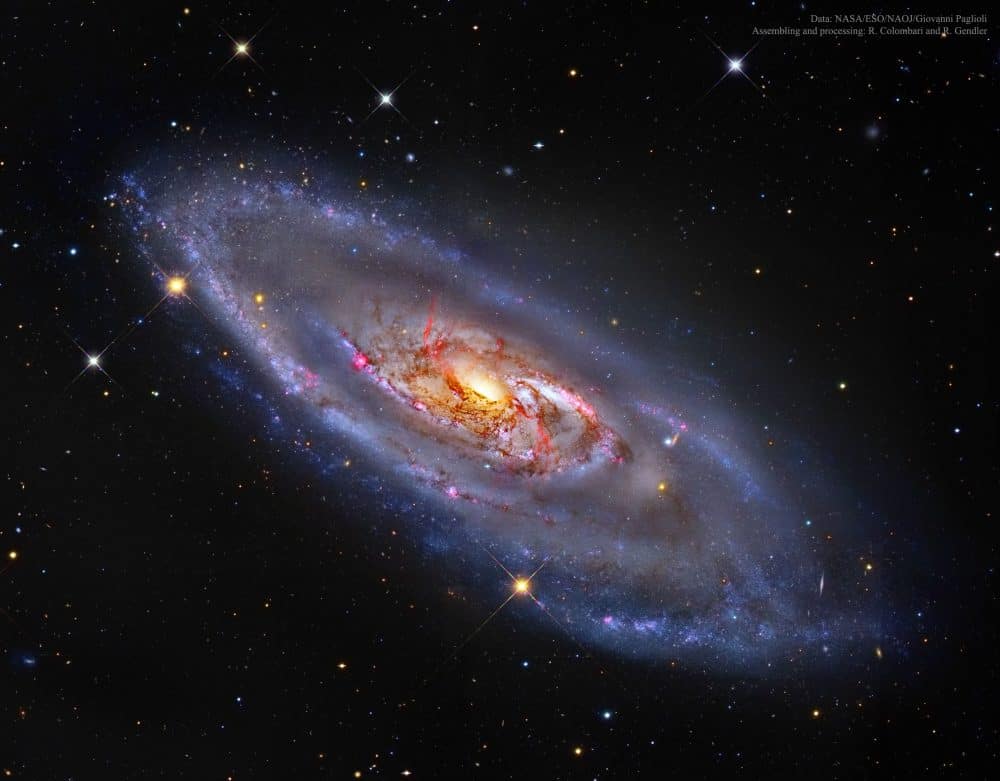The Cosmos with NGC 4258
a marvelous spiral that shines at magnitude 8.4 and is one of the sky’s brightest galaxies. It spans 20′ by 8.4′. Through a 10-inch or larger telescope, you’ll begin to see the mottled texture and spiral structure. The strikingly linear northern arm appears more pronounced, while the southern arm looks more diffuse.
Messier 106 (also known as NGC 4258) is an intermediate spiral galaxy in the constellation Canes Venatici. It was discovered by Pierre Méchain in 1781. M106 is at a distance of about 22 to 25 million light-years away from Earth. M106 contains an active nucleus classified as a Type 2 Seyfert, and the presence of a central supermassive black hole has been demonstrated from radio-wavelength observations of the rotation of a disk of molecular gas orbiting within the inner light-year around the black hole. NGC 4217 is a possible companion galaxy of Messier 106. A Type II supernova was observed in M106 in May 2014.
